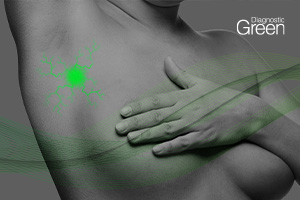To compare two tracers (indocyanine green and patent blue) to detect sentinel nodes. Methods: A single-center, retrospective study of women treated due to early-stage cervical cancer (International Federation of Gynecology and Obstetrics 2009 IA1 with lymphovascular invasion, IA2, and IB1). Location and tracer of all detected sentinel nodes had been documented for a prospective, multicenter trial (SENTIX trial). All sentinel nodes were sent to frozen section and final analysis through ultrastaging using a standard protocol.
Results: Overall, 103 patients were included. Bilateral detection rate for indocyanine green (93.2%) was significantly higher than for blue dye (77.7%; p=0.004). Their combined use significantly increased the bilateral detection to 99.0% (p=0.031). While 97.4% of all sentinel nodes were located below the common iliac vessels, no para-aortic nodes were labeled. Simultaneous bilateral detection with both tracers was found in 71.8% of the cases, of which the sentinel nodes were identical in 91.9%. Nine positive nodes were detected among seven patients (6.8%), all marked with indocyanine green while patent blue labeled six. Frozen section failed to detect one of three macrometastases and three of four micrometastases (sensitivity 43%; negative prediction value 96%).
Conclusion: Anatomical distribution and topographic localization of the sentinel nodes obtained with these tracers were not different. Indocyanine green provided a significantly higher bilateral detection rate and had superior sensitivity to detect positive nodes compared with patent blue. Combining indocyanine green and blue dye increased the bilateral detection rate significantly.




